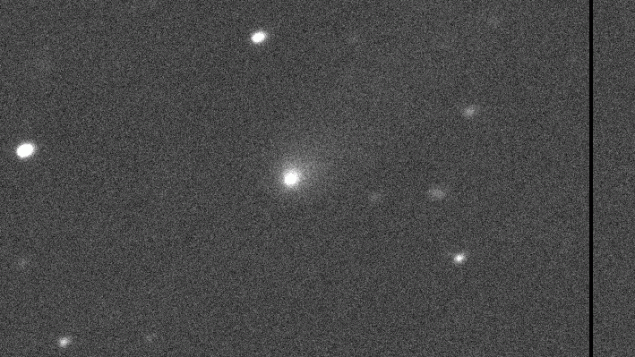In 2017, astronomers made a remarkable discovery by locating and studying the very first interstellar object, a strange space rock called ‘Oumuamua.
Now, a second object from another solar system has recently been located by the Canada-France-Hawaii Telescope. But this time, it could be a comet, making it the first interstellar one ever observed by humans.
More importantly, it could help us better understand our solar system and its origins.
A comet is a celestial body moving around the sun, usually in a very eccentric orbit, consisting of a central mass surrounded by an envelope of dust and gas that can form a tail that moves away from the sun.
It is not unusual to observe comets, but this could be the first time we see one coming from another star system.
Named C/2019 Q4 (Borisov), the object was first spotted by amateur astronomer Gennady Borisov on August 30, 2019 at the MARGO Observatory in Nauchnij, Crimea.
Astronomer Karen Meech was one of the scientists who discovered ‘Oumuamua. She is also one of the first scientists to take a closer look at C/2019 Q4. She explained to us how it happened:
A major discovery
Now, Meech’s team, which includes two Canadian researchers, has been able to obtain a first colour image of C/2019 Q4. This allowed them to identify a comet tail, which is the product of gas escaping from the surface of the object.
If researchers can prove that C/2019 Q4 is an interstellar entity, this could have major consequences on our understanding of how our solar system was formed, as Meech explained:
In 2017, scientists were not able to study ‘Oumuamua properly as they had only one week to observe it. What is interesting about C/2019 Q4, however, is that by measuring the light signature surrounding the comet, astronomers will be able to obtain a lot of information about it.
At the moment, we are only in the early stages of analysis. Karen Meech told us what scientist know and don’t know about this new object:
From her observations and some work by astronomer Javier Licandro and his colleagues at the Canary Islands Institute of Astrophysics, C/2019 Q4 seems quite similar to the spectra of a class of objects in our solar system. This could mean that these known objects and interstellar visitors are more or less made up of the same components.
One year to study it
We still need to define where C/2019 Q4 comes from to be sure that it is of interstellar origin. To do this, astronomers will have about a year to examine the object and try to calculate its orbit. Meech gave us more details about her plans for the future:
Astronomers will try to determine the eccentricity of C/2019 Q4, or how extreme its orbit is. Based on this, we can tell if the object comes from outside our solar system. For the time being, initial data suggest that yes. A few more months and we may be able to know its origin and composition, which would help us better understand where we come from.
With files from Space.com







For reasons beyond our control, and for an undetermined period of time, our comment section is now closed. However, our social networks remain open to your contributions.